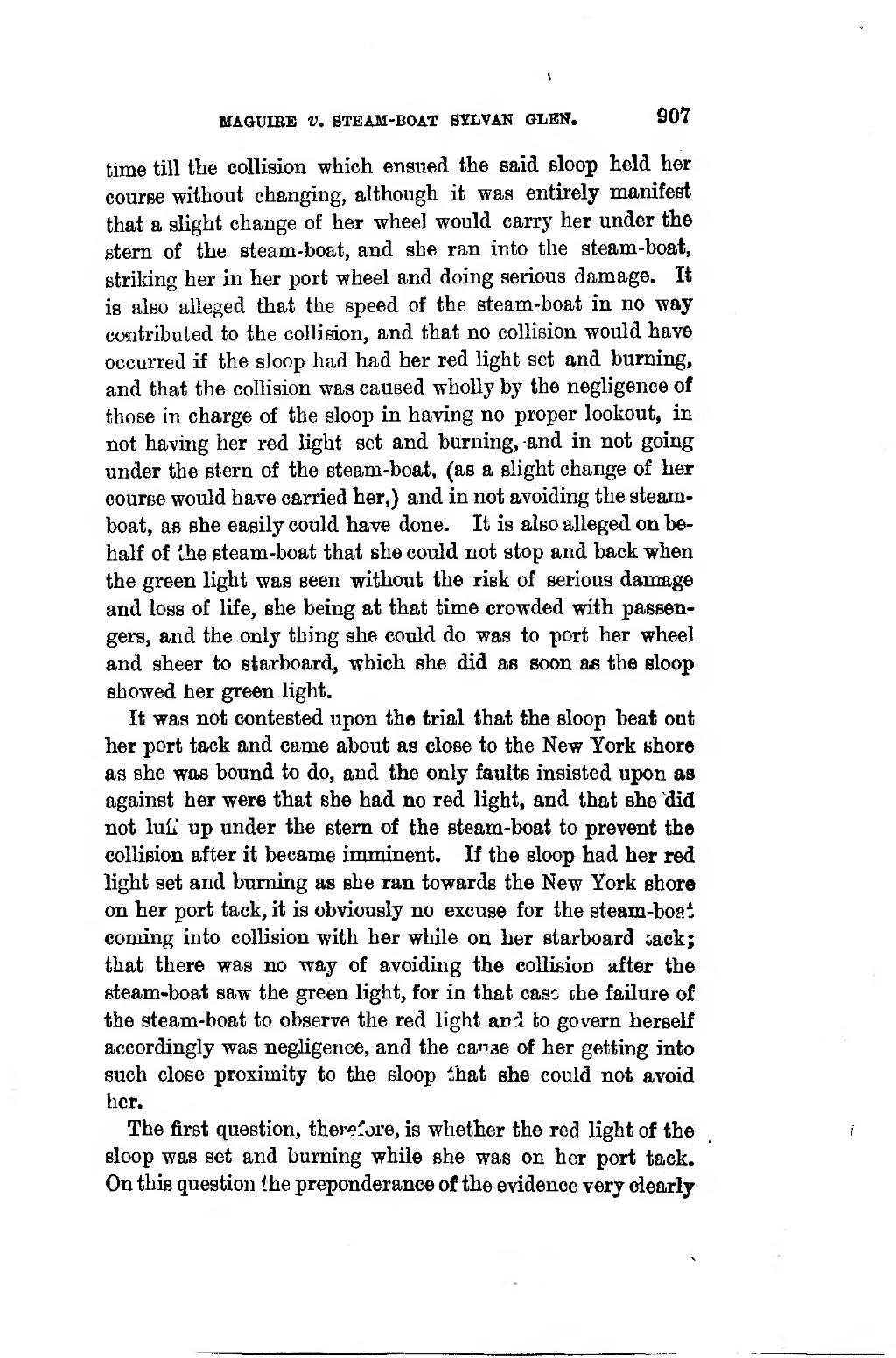MAGUIBB V. STEAM-BOAT STLVAN GLBH. 907
time till the collision which ensued the said sloop held her course without changing, although it was entirely manifest that a slight change of her wheel would carry her under the stem of the steam-boat, and she ran into the steam-boat, striking her in her port wheel and doing serious damage. It is also alleged that the speed of the steam-boat in no way contributed to the collision, and that no collision would have occurred if the sloop had had her red light set and burning, and that the collision was caused wholly by the negligence of those in charge of the sloop in having no proper lookout, in not having her red light set and burning, and in not going under the stern of the steam-boat, (as a slight change of her course would have carried her,) and in not avoiding the steam- boat, as she easily could have done. It is also alleged on be- half of the steam-boat that she could not stop and back when the green light was seen without the risk of serious damage and loss of life, she being at that time crowded with passen- gers, and the only thing she could do was to port her wheel and sheer to starboard, which she did as soon as the sloop showed her green light.
It was not contested upon the trial that the sloop beat out her port tack and came about as close to the New York shore as she was bound to do, and the only faults insisted upon as against her were that she had no red light, and that she did not luff up under the stern of the steam-boat to prevent the collision after it became imminent. If the sloop had her red light set and burning as she ran towards the New York shore on her port tack, it is obviously no excuse for the steam-boat coming into collision with her while on her starboard tack; that there was no way of avoiding the collision after the steam-boat saw the green light, for in that case the failure of the steam-boat to observe the red light and to govern herself accordingly was negligence, and the cause of her getting into such close proximity to the sloop that she could not avoid her.
The first question, therefore, is whether the red light of the sloop was set and burning while she was on her port tack. On this question (he preponderance of the evidence very clearly
